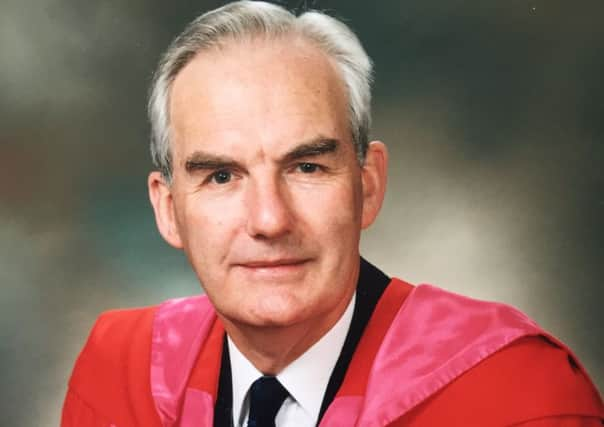Appreciation: Prof Emeritus John Southam, former Dean of Edinburgh Dental Hospital


John Chambers Southam, Professor Emeritus Oral Pathology and Oral Medicine, University of Edinburgh, died on the 6 October at the age of 81. Born in Leeds in February 1934, John was raised in the family home that doubled as a dental surgery for his father, who also worked part time in oral surgery at Leeds Dental Hospital.
Following secondary school education at Leeds Grammar School John went up to Cambridge and read Medicine at Gonville and Caius. Following success in the Medical Tripos in 1958 and completion of the required pre-registration hospital appointments, he matriculated into Leeds Dental Hospital and School and qualified as a dentist in 1962.
Advertisement
Hide AdAdvertisement
Hide AdIn 1963 John was appointed lecturer in Oral Pathology at Sheffield University under the guidance of Professor John Hodson. It was in Sheffield that John’s superb skills as a teacher were honed.
Oral pathology is not always the subject in which undergraduates keen to practise dentistry demonstrate enthusiasm but John inspired his students and was and remained one of last exponents of brilliant blackboard skills. He only ever used clinical photographs in his lectures and never utilised the aid of slides of script or hand-outs. Such was his ability to communicate they were not required.
In 1970 John accepted the post of lecturer at Edinburgh University on the condition that as soon as he had completed membership of the Royal College of Pathologists he would be promoted to senior lecturer and honorary consultant, a post he achieved in 1972.
In 1977 John was appointed professor of oral pathology and oral medicine. In 1981 he graduated Doctor of Medicine at Cambridge University for his research into the fibrinolytic activity of oral epithelium and dental pulp tissue.
On his return to Edinburgh after defending his thesis, John, always a very modest man, did allow himself one small boast when he told me quietly that his examiners had been unable to find a single spelling or grammatical error in his thesis. Dr (later Professor) James Soames joined the department in 1979 and together he and John embarked upon writing an undergraduate text in Oral Pathology for which there was a dire need. This book, now in its fourth edition, rapidly became the standard oral pathology text book throughout the United Kingdom. The collaboration between James and John was brilliant, resulting in a text both erudite and easily read. While originally designed for undergraduates, it quickly found a place on the bookshelves of postgraduate dental and oral surgery trainees.
In 1981 John was awarded a Fellowship in Dental Surgery of the Royal College of Surgeons of Edinburgh within which institution he later became vice-dean and where his teaching and examining skills both in the UK and abroad were much in demand.
From 1983 to 1988 John served as dean of Dental Studies at Edinburgh University. These were hard, often brutal, years as he, with Professor Sutcliffe, strove to prevent the school being closed as part of the government’s plan to reduce the number of graduating dental students with the closure of two schools; one in London and one in Scotland. When closure became inevitable he and now Dean Sutcliffe fought hard to establish, in its place, a postgraduate dental institute. They succeeded. Those years, however, took their toll and when the last Edinburgh dental graduate qualified in 1994 John took early retirement.
Throughout his life John retained a well-balanced lifestyle. Family was rightly put before personal ambition. As a deeply committed Christian he served his church in many ways and when the local Scout troop appeared to be on the brink of collapse John stepped in, took the reins, and of course the troop then flourished.
Advertisement
Hide AdAdvertisement
Hide AdNot long after he retired John experienced what was described at the time as a “spinal stroke” and spent several months in a wheelchair.
With characteristic grit and determination he exercised himself back to some degree of mobility and became a well-known figure in his community, walking with the aid of two sticks to church, shopping, and his local literary and geographical society meetings where he frequently gave thoroughly researched talks on an eclectic range of topics.
He remained until the end upbeat, positive, charming and full of good humour although steadily losing his sight and a general reduction in mobility.
John was supported wonderfully by his wife Susan, whom he adored, until latterly the roles were reversed for a mercifully short time as Susan succumbed to pancreatic cancer.
After Susan’s death in May this year, blessed by the love and support of his sons, Philip and Jeremy, his daughters-in-law Gillian and Angela and six grandchildren, to all of whom he was very close, John died peacefully of cancer of the bladder. He was ready to go.